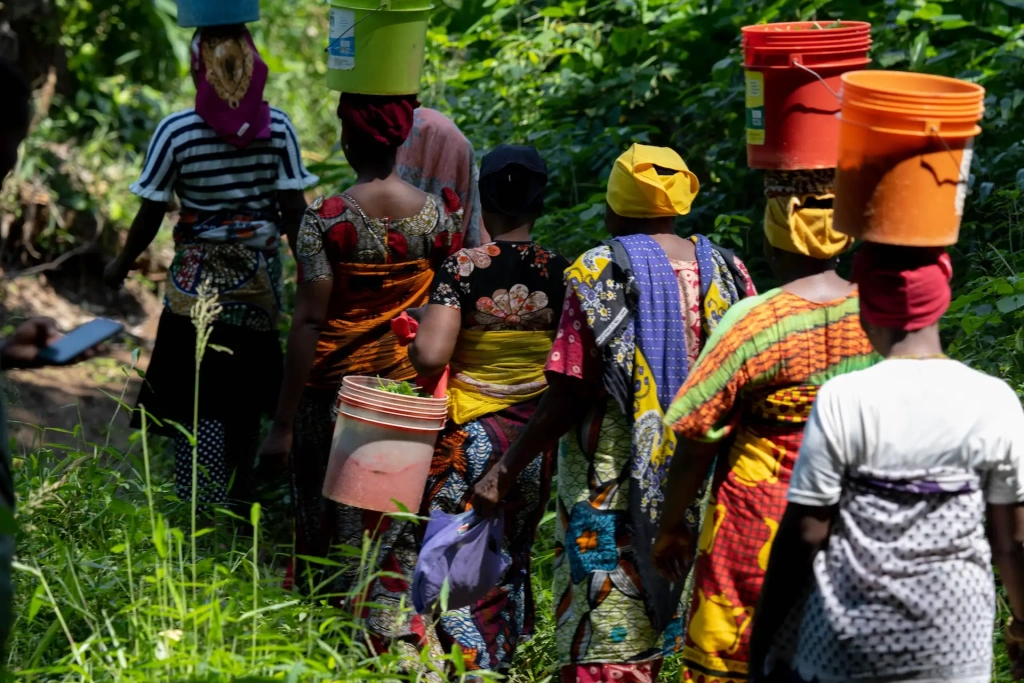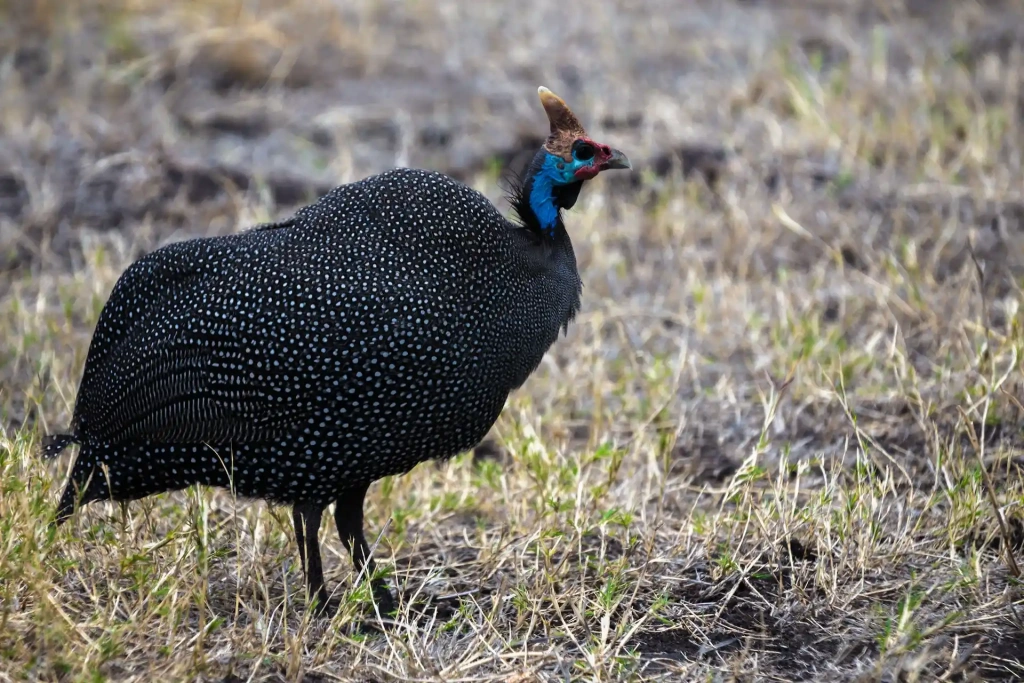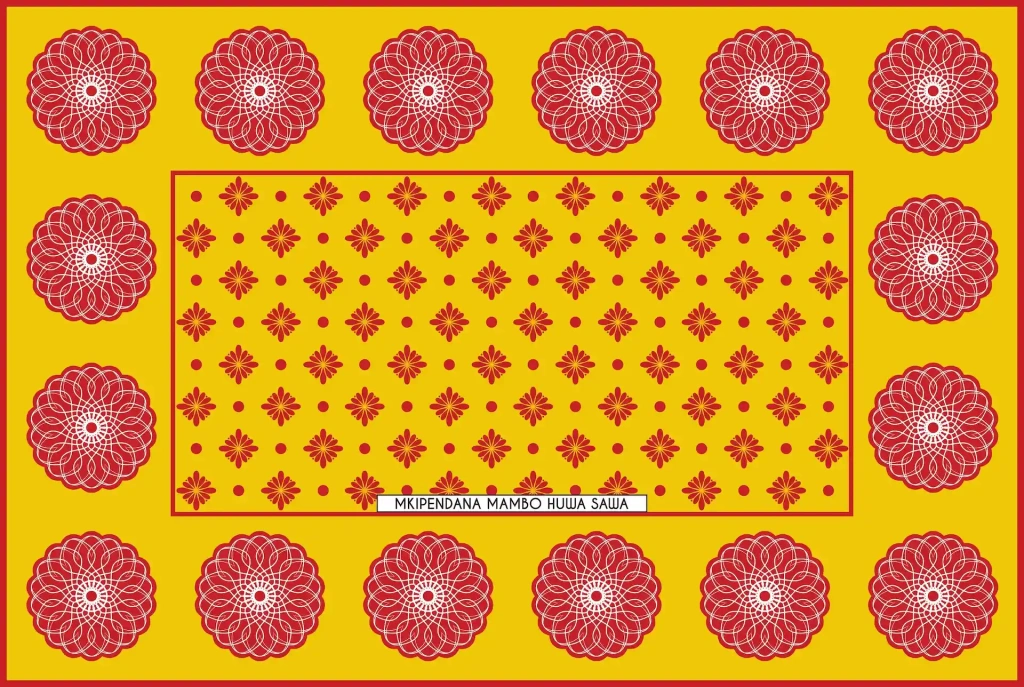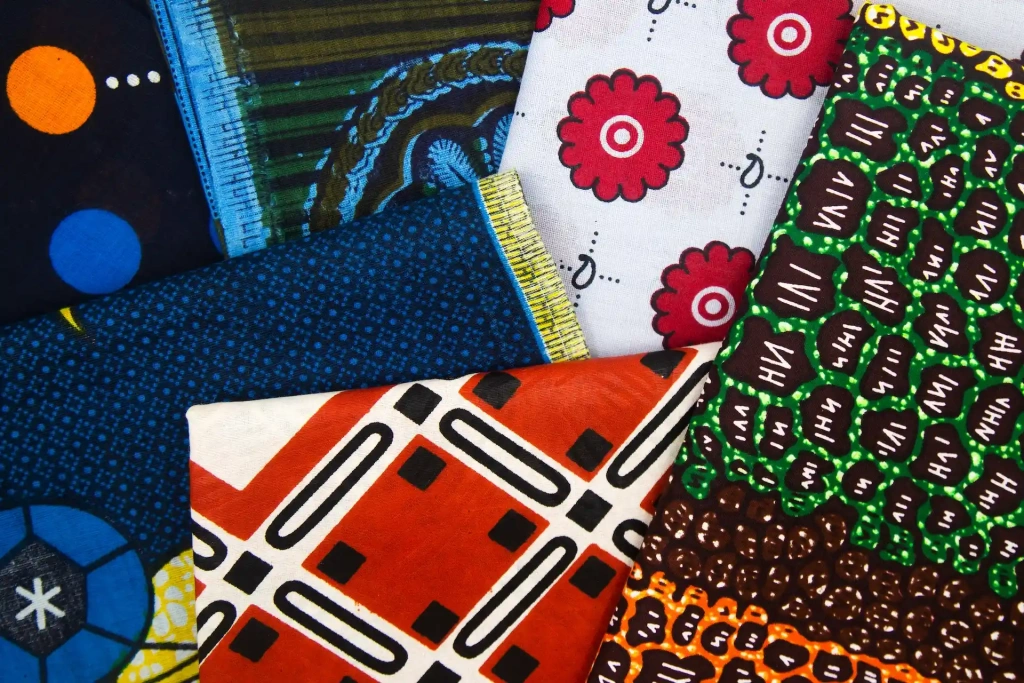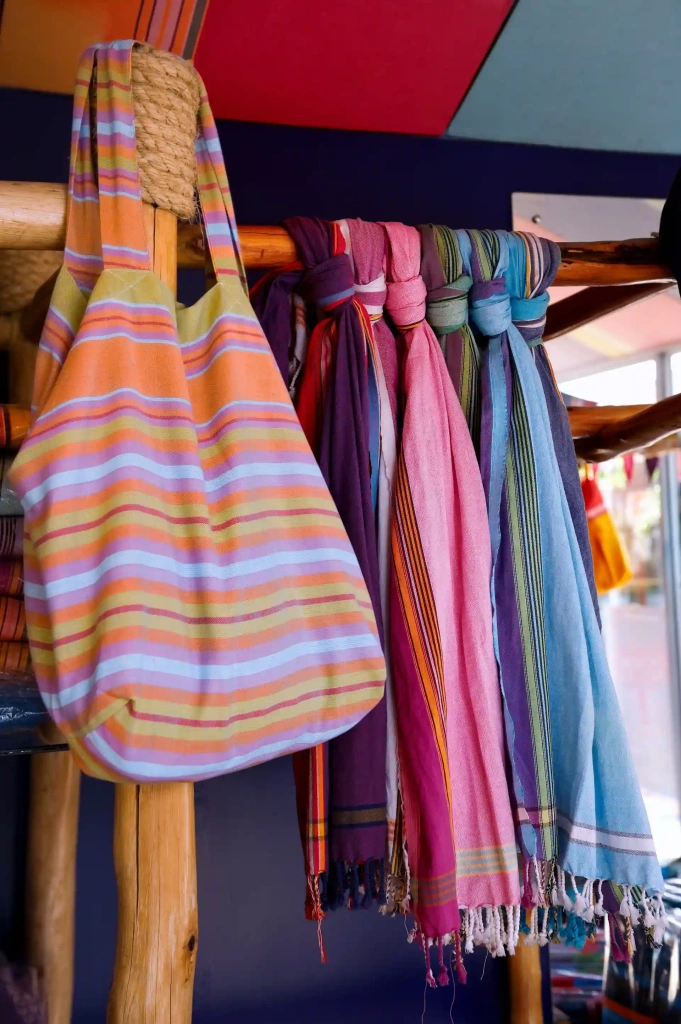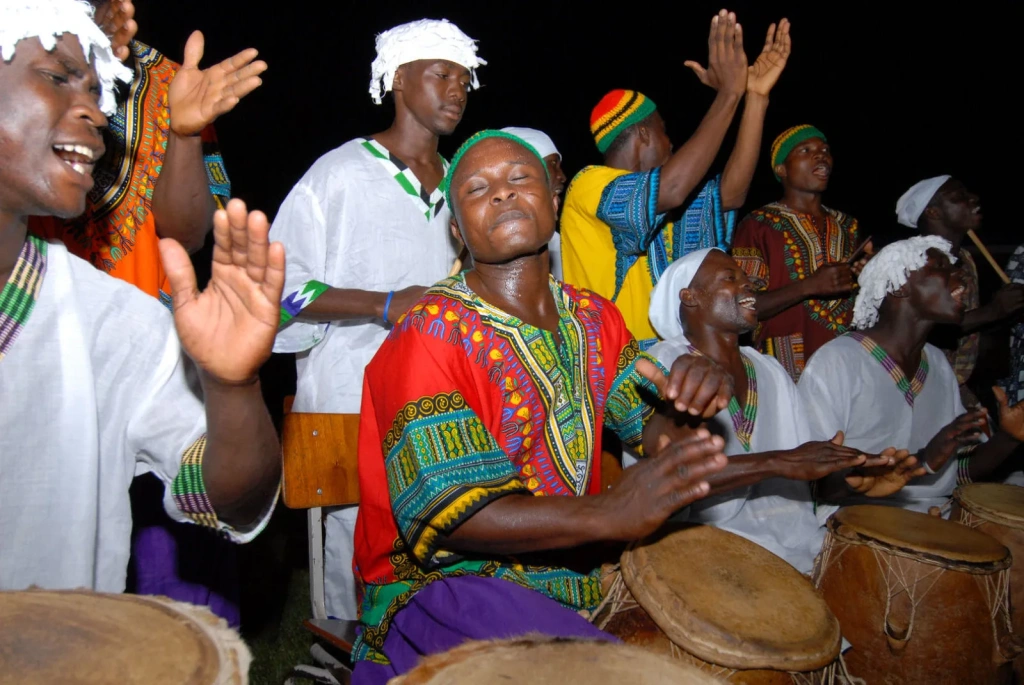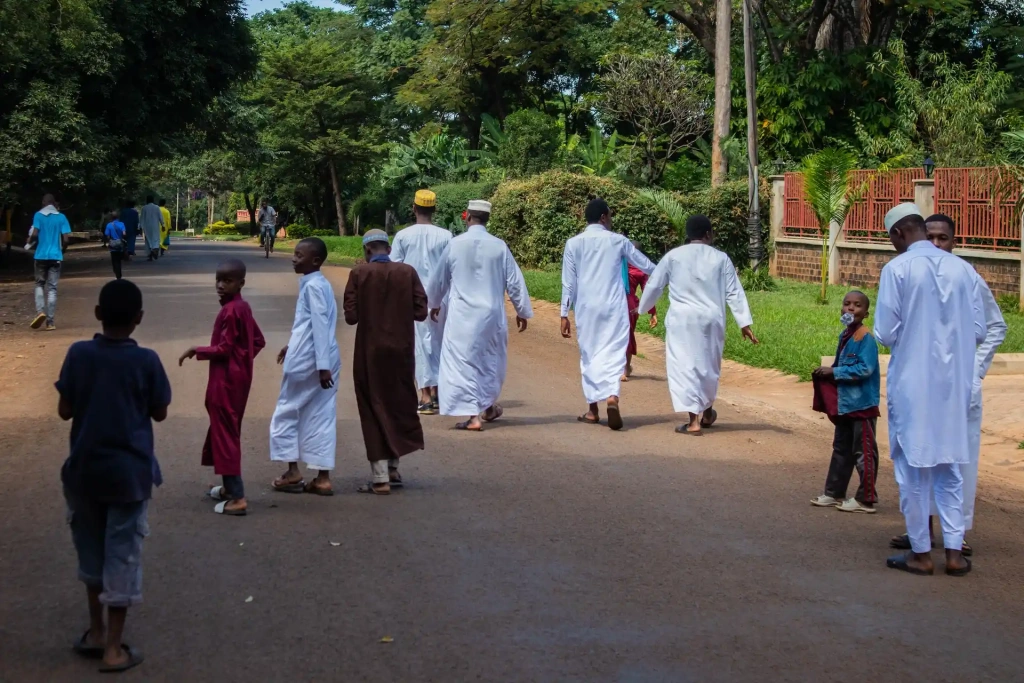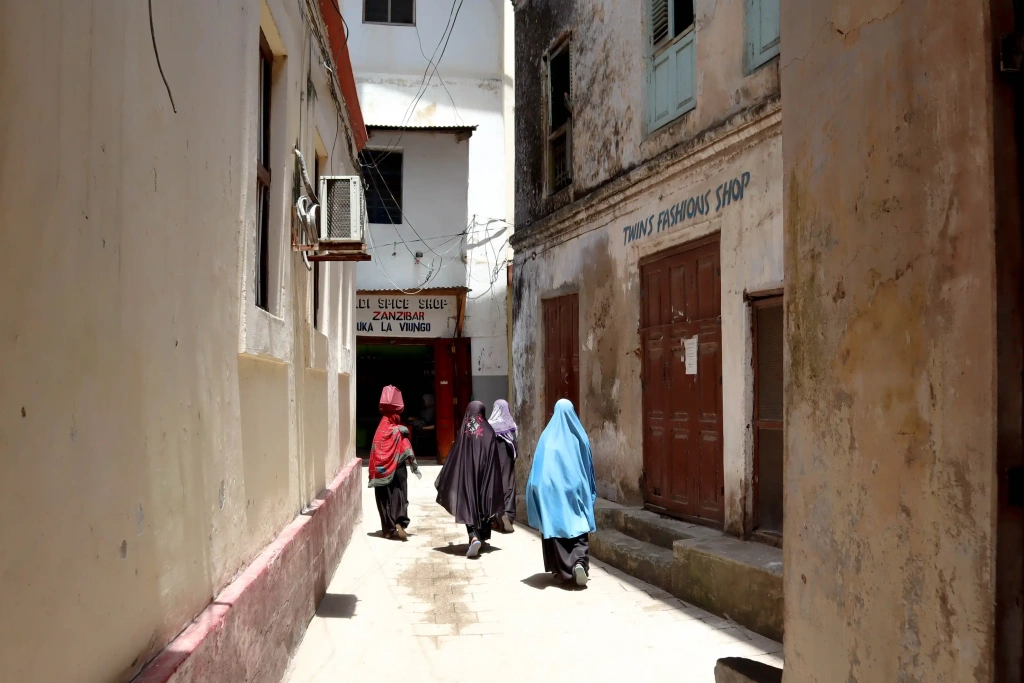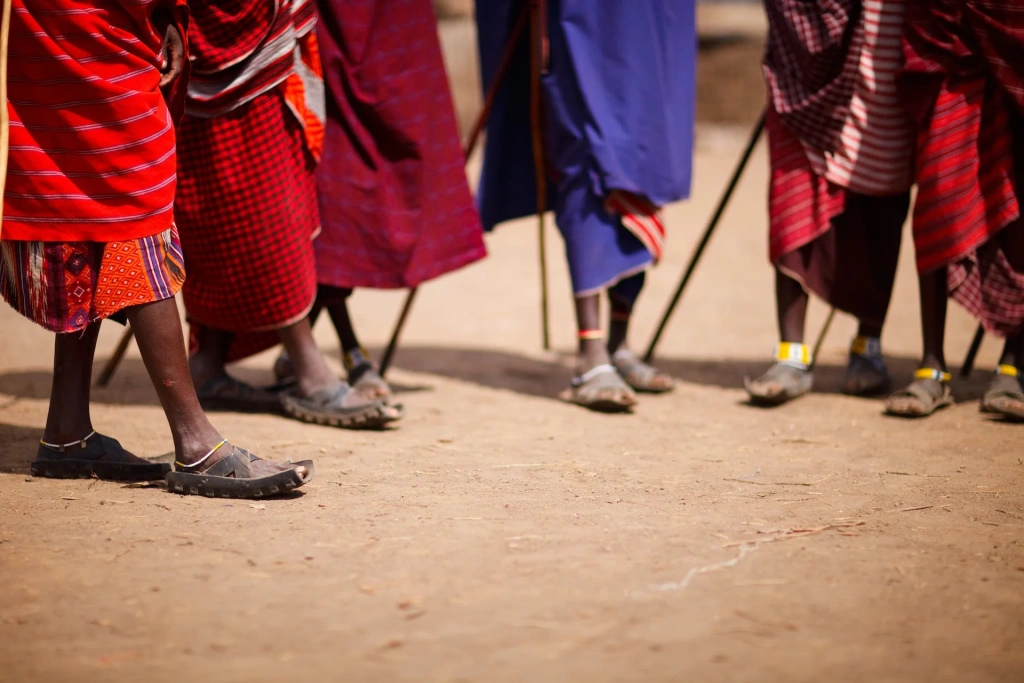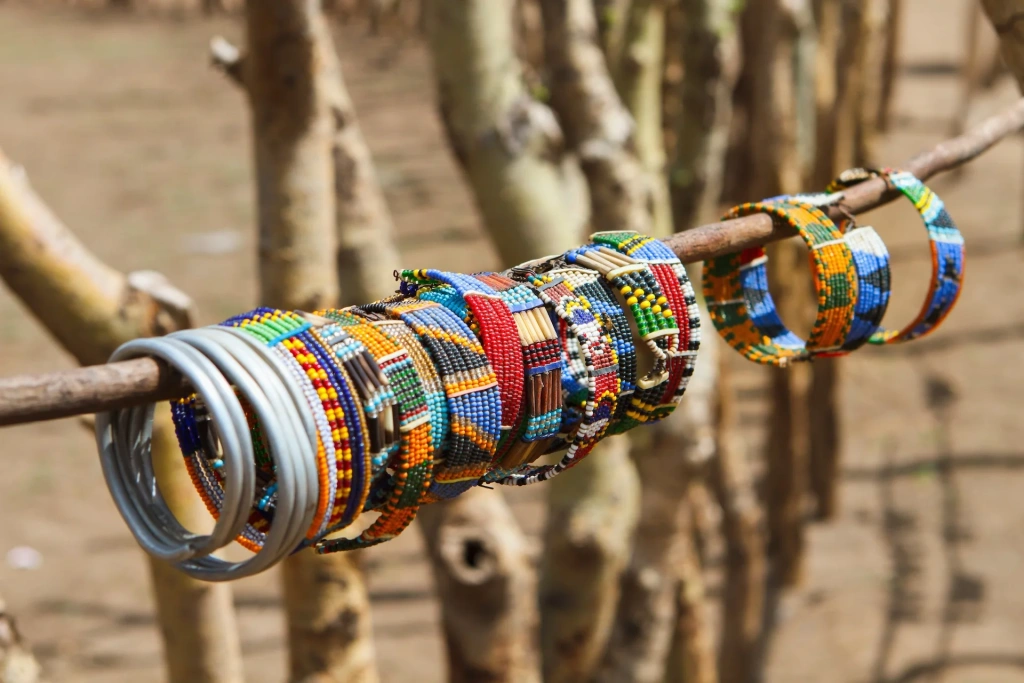Traditional clothing in Tanzania is vibrant and diverse, featuring brightly colored kangas and kitenge fabrics with countless patterns, checkered Maasai shuka wraps, white men's robes called kanzu, traditional Muslim garments, and a variety of beautiful beaded jewelry.
In everyday life, many Tanzanians dress boldly, embracing bright colors, mixing patterns, and accessorizing with jewelry. Even men, especially young men, aren’t shy about wearing vivid clothing. This might seem unusual to visitors from northern countries with harsher climates and more subdued wardrobes, but in Tanzania, this explosion of color looks natural and stylish. Women’s dresses are particularly vibrant and are often paired with matching scarves called mtandio.
Tanzania provides the perfect backdrop for expressive clothing, with its year-round sunshine, warm climate, blooming trees and shrubs, vibrant tropical birds and wildlife, and village homes painted in striking colors.
As women wear some of the most striking traditional Tanzanian attire, let’s start our fashion showcase with their vibrant and expressive styles.
Kanga cloth, the queen of Tanzanian clothing
The kanga is a rectangular piece of cotton fabric featuring a repeating pattern. While it may not be considered a complete garment in a Western sense, Tanzanians often use it as a versatile and essential part of their wardrobe. Women commonly wrap it around their chest, drape it over their shoulders, or tie it at the waist to wear as a skirt.
This staple of the Tanzanian wardrobe is often sold as pairs of matching kangas, which are worn together to cover the entire body. This set is called a doti. Men also wear kangas, though less often and typically at home.
Kangas are incredibly versatile. In both villages and cities, it’s common to see mothers carrying babies on their backs, wrapped in a kanga used as a sling. Some women wear kangas as head coverings or drape them as large shawls that cover the head and upper body. Kangas are also used to make dresses and skirts, and in recent years, they’ve become a popular material for accessories like headbands, aprons, bags, and more.
In everyday life, there are even more ways to use this colorful fabric. People use kangas as light blankets to cover children or themselves during naps, or hang them as curtains or decorative wall pieces. They’re also often cut into smaller pieces to make practical household items like napkins or potholders.
Kangas commonly feature flowers, fruits, and a variety of decorative patterns. Occasionally, animals make an appearance, too. Early kanga designs, however, started as simple light speckles on a dark background. This pattern mimicked the spotted feathers of the guinea fowl, a native African bird called kanga in Swahili. That’s how the fabric got its name.
Both the Kenyan city of Mombasa and the Tanzanian island of Zanzibar claim to be the place where kangas first appeared in the mid-19th century. However, the exact origin isn’t so important, as both areas are key centers of Swahili culture. Starting in the 1990s, kangas began featuring inscriptions alongside their patterns, and this trend quickly became popular in Tanzania. These phrases are often proverbs, sometimes political slogans, and occasionally personal messages meant for loved ones or members of the community.
A classic kanga follows a distinct design: the central panel, known as mji, is framed on all four sides by a border called pindo, with the colors and patterns of the border contrasting those of the main section. If the kanga features an inscription, called jina, it’s printed along the bottom edge. These messages can range from warm wishes, especially when the kanga is given as a gift, to sharp or even bold statements. Often, the inscriptions are directed at those around the wearer. Personal messages usually focus on relationships, while Swahili proverbs and sayings convey the wearer’s character and values.
Here are some examples of jina inscriptions you might find on kangas:
- Siku ya kufa nyani miti yote huteleza — All trees are slippery on the day the monkey is destined to die
- Sichagui sibagui atayenizika simjui — I don’t choose who will bury me (You never know who will do you a favor, so treat everyone with respect)
- Pilipili iko mtini yakuwashia nini? — A chilli pepper on its plant, how could it make you hot? (Don’t meddle in matters that don’t concern you)
- Nazi mbovu harabu ya nzima — A rotten coconut spoils the good ones
- Naishi niwezavyo siishi mtakavyo — I live as I am able, not as you wish
- Mtumai cha ndugu hufa masikini — One who always depends on his brother will die poor
- Mke mwenza!! Haa!! Mezea! — Co-wife! Ha! Just swallow it! (A message to a husband not to even think about other wives.)
For women, kanga holds symbolic meaning. It’s common to find inscriptions that reveal a wife’s awareness of her husband’s infidelity. These messages are often directed at her rival and the community gossip. During key political events, women wear kangas with slogans that show their support for particular causes or candidates. When women from the same community wear kangas in matching colors, it sends a message of unity and sisterhood.
Kangas are a popular gift in Tanzania, given at weddings, birthdays, family celebrations, and even during difficult times. In those somber moments, the inscriptions on kangas are meant to offer comfort to the wearer. If you’re wondering what to bring back from Tanzania as a souvenir, a kanga makes a thoughtful gift for yourself or loved ones. Just ensure that the message is suitable. We also have a few more Tanzanian souvenir ideas to share with you.
Kitenge fabric and its uses in Tanzanian fashion
Kitenge is another popular piece of women’s clothing in Tanzania. Like the kanga, it’s a rectangular piece of fabric, but it’s smaller and made from thicker material. Women often wear kitenge as scarves or shawls to complement a kanga or any other outfit, even modern pants and blouses. They also use kitenge as skirts or wrap themselves in them, creating dress-like looks.
Many accessories are crafted from kitenge, including scarves, headwear, bags, kitchen towels, lampshades, and tablecloths. When traveling in Tanzania, you’ll often spot tablecloths with vibrant patterns in hotel restaurants — that’s kitenge. This versatile fabric can be used to create nearly any type of clothing, including shirts and pants for men.
It is not typical for kitenge fabrics to feature printed inscriptions. Interestingly, they’re even more convenient than kangas for use as baby slings, thanks to their narrower width and greater length. Sometimes, kitenge fabrics are turned into decorative pieces in public spaces, framed and displayed on walls. As you can see, kitenge is a multifunctional textile and yet another excellent idea for a Tanzanian souvenir.
Kikoi, shuka, animal skins
Another common type of cotton fabric used for clothing in Tanzania is kikoi (or kikoy). Men often wear it wrapped around the waist. Like kitenge and kanga, the kikoi is a rectangular piece of fabric, but it stands out in several key ways. Its patterns are embroidered rather than printed, and it’s finished with fringes along the edges.
Women also make use of kikois, often tying them around their heads or using them to carry babies. Kikois also work well as beach towels, blankets, or pareos.
Another type of clothing is closely associated with the most well-known indigenous people of Tanzania, the nomadic Maasai. Today, they’re widely recognized as fearless and dependable guards. Many Maasai have moved to urban areas, so you're likely to spot them wherever you travel in Tanzania. They wear distinctive checkered wraps called shuka, usually two at a time — one draped over the shoulders and the other tied across the chest, reaching down to the knees.
The most commonly seen shukas online are black and red, but they also come in blue, green, yellow, light blue, and multicolored variations. In addition to checkered patterns, striped designs are also popular. Shukas are made from cotton or wool, making them durable, long-lasting, and resistant to fading. Beyond being worn as wraps, they’re often used as blankets as well. The Maasai shuka is recognized worldwide as arguably the most iconic form of ethnic clothing in Tanzania and throughout Africa.
Interestingly, the Maasai only started wearing shukas around the mid-20th century. Before that, their traditional clothing was made from animal skins. Today, very few African communities maintain this tradition. Among them are the Hadza tribe of Tanzania, who are gradually adopting modern clothing but can still be seen wearing wraps made from antelope skins, jewelry adorned with ostrich feathers, and other traditional accessories.
Overall, the use of animal parts is becoming less common, though livestock skins are still frequently used in Tanzania to create artwork and upholster furniture like chairs.
Traditional male clothing: kanzu and dashiki
Besides kikois, men in Tanzania often wear West African dashiki shirts. Sometimes people refer to them as kitenge, but dashikis have a distinct, classic design: a V-shaped neckline, short sleeves, and a loose, wide fit. They usually have no buttons and feature bright, bold patterns. These vibrant shirts are truly eye-catching and full of life, and it’s hard not to smile when you see a man wearing a dashiki.
For weddings and other special occasions, men often wear a kanzu, a long white robe similar to a , , or . This garment clearly reflects the influence of Arab culture. Kanzus are made from a variety of materials, ranging from silk to synthetic blends. While white is the most traditional color, shades of cream and off-white are also popular. A signature detail is the tassel that hangs from the front of the collar. To complete the ensemble, a jacket is typically worn over the kanzu.
Dashikis and kanzus are often paired with a traditional cap known in Swahili as a kofia. Today, “kofia” broadly refers to any type of headwear, but originally it described a small cylindrical cap introduced to East Africa by Muslim communities from the Arabian Peninsula.
Islamic clothing
Although the country is home to a diverse mix of religions, nearly half of Tanzania’s population practices Islam. As a result, many men and women wear traditional Islamic clothing, especially in Zanzibar and Dar es Salaam, where Islamic influence has historically been strong. Walking through the streets, you’ll see a rich variety of fashion styles embraced by local Muslim communities.
We won’t dive deep into the details, but as you stroll through Dar es Salaam or Stone Town, you’ll notice many women dressed in long gowns paired with hijabs, niqabs, or even burqas. Men, in addition to wearing kanzus, may be seen in thawbs, often layered with dark cloaks known as bishts. Women, too, are sometimes dressed in flowing black robes called buibui in Swahili.
Tanzanian footwear, beaded jewelry and accessories
Traditional footwear in Tanzania for both men and women is sandals. Among the most well-known are Maasai sandals, crafted from recycled motorcycle tires. These sandals are exceptionally durable and dependable, tough enough to handle the rugged savannah terrain, where sharp acacia thorns are common. What was once tire tread now serves as sturdy protection for the feet of the Maasai.
Women often embellish their sandals with small shells and colorful beads. Beads, in general, are a beloved material for jewelry across Tanzania. Beaded bracelets, especially those featuring the colors of the Tanzanian flag, are worn with pride by people of all ages, genders, and social standings. Far from being seen as cheap or tacky, these bracelets are valued accessories. Many women and Maasai men alike often stack multiple bracelets on one wrist, creating a vibrant and eye-catching look.
People also wear bracelets around their ankles. Popular jewelry includes simple bead strands, beaded necklaces, and earrings. Beyond plastic, materials like stone, metal, and shells are commonly used. Particularly striking are earrings and brooches made from transparent resin, often featuring natural items such as coffee beans or dried flowers. These unique pieces are frequently found at local markets and fairs. If you’re looking for souvenirs from Tanzania, consider earrings shaped like the African continent or beaded bracelets featuring the colors of the Tanzanian flag.
We hope you enjoyed this glimpse into traditional Tanzanian attire and jewelry. Come visit Tanzania for a safari and experience firsthand all the vibrant styles and culture we've shared with you.
All content on Altezza Travel is created with expert insights and thorough research, in line with our Editorial Policy.
Want to know more about Tanzania adventures?
Get in touch with our team! We've explored all the top destinations across Tanzania. Our Kilimanjaro-based adventure consultants are ready to share tips and help you plan your unforgettable journey.















